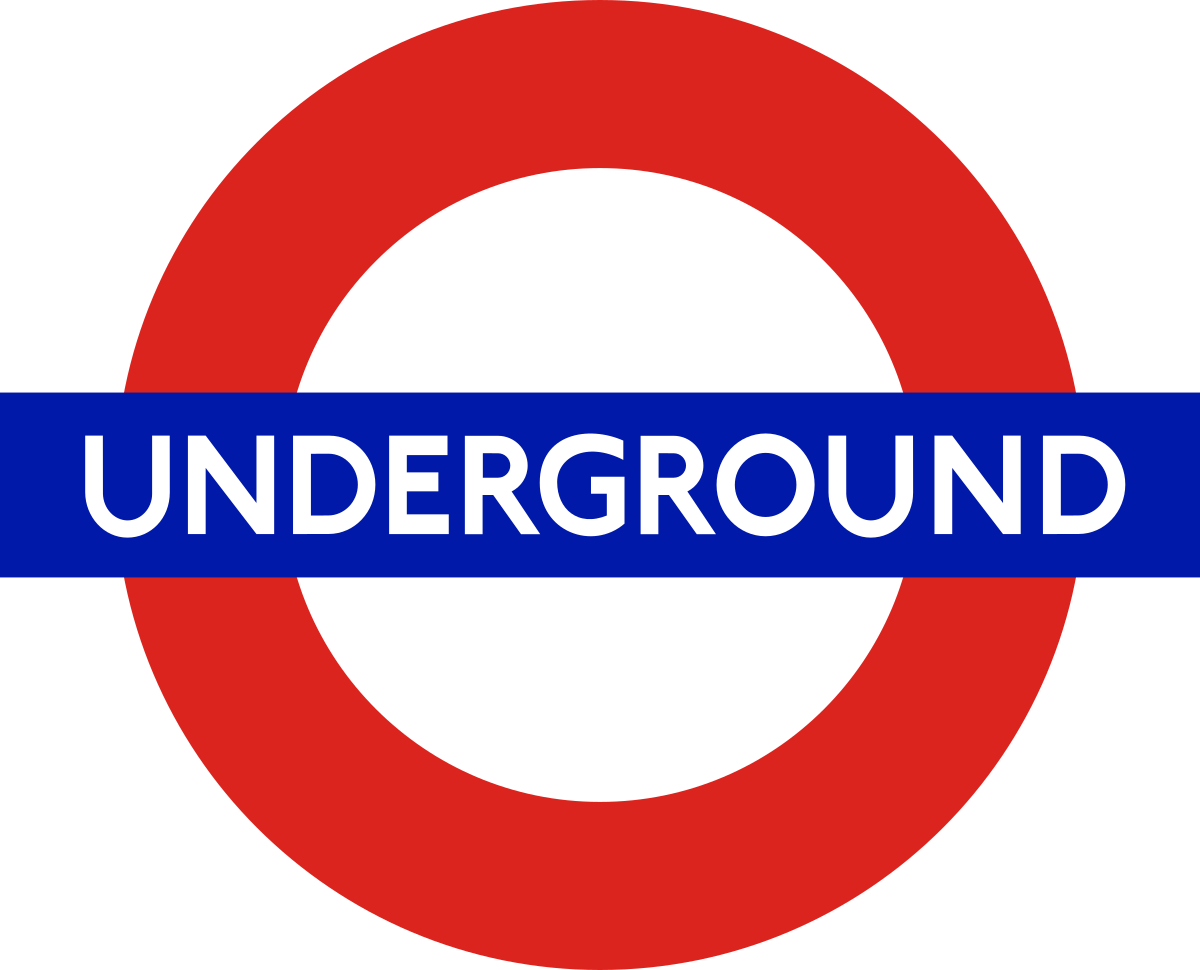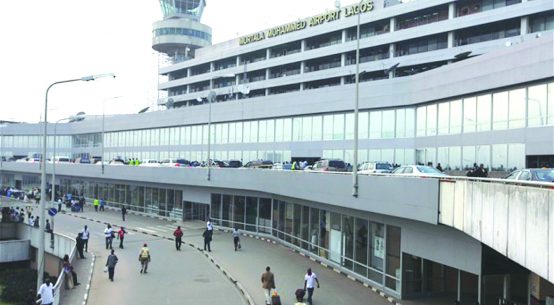
The London Underground logo is the most famous and most success roundel logo so far.
The London Underground is a public rapid transit system serving London and some parts of the adjacent counties of Buckinghamshire, Essex and Hertfordshire in the United Kingdom. Began operation: January 10, 1863. Number of stations: 270 served (260 owned). Source: Wikipedia
Scan a map of the London Underground for the first time, and you’ll likely notice that it is more than the ground-breaking design that seems imaginative. The names of the stations, too, can seem curiously, even bizarrely, whimsical. Some seem suited better to a medieval fantasy (Knightsbridge, Queensway) or a children’s book (Piccadilly Circus, Elephant & Castle) – and others still make Londoners giggle (Shepherd’s Bush, Cockfosters).
But these names weren’t chosen simply to give city-dwellers an alternate world to imagine as they hurtle beneath the capital. Some of their origins, in fact, date back millennia.
We’ve chosen 10 of our favourites to find out where their names really come from.
At some point in its history, this name lost an ‘n’ (Credit: Alamy)
Covent Garden: The name for this Tube station (as well as the shopping arcade, opera hall and West End neighbourhood) would be almost self-explanatory – if it weren’t for the ‘n’ that went walkabout at some point since the Middle Ages. By the 13th Century, the site was a walled-off area of orchards and gardens which belonged to the monks of Westminster Abbey. They referred to it as “the garden of the Abbey and Convent” and then, of course, as “Convent Garden”. Seized (and given away) by King Henry VIII after the Dissolution of the Monasteries, it later was laid out as a residential quarter – one that had earned a reputation far different from its religious roots by the 17th Century, when it was a notorious red-light district (as enshrined in William Hogarth’s engraving of the area’s Rose Tavern brothel). Since cleaned up and now one of London’s best-known tourist attractions, Covent Garden is home to a Tube stop of the same name which serves the Piccadilly Line.
If the name weren’t enough, the frontage now at the shopping centre outside of the station adds extra whimsy (Credit: Alamy)
Elephant & Castle: One of the more whimsical (and perplexing) station names, this one in south London, oddly enough, most likely comes from the Worshipful Company of Cutlers – a medieval guild of craftsmen who made swords and knives. Granted in 1622, their crest included an elephant… carrying a castle. It’s usually believed that the elephant referred to the ivory that they used for their handles. And the castle? Possibly included to show the scale of an elephant, as few Europeans in the Middle Ages would have ever seen the creature before. Given that the cutlers likely supplied arms to King Henry V at the decisive Battle of Agincourt in 1415, though, there might be an argument that the elephant here, with the tower on its back, is a symbol of support for the state.
Either way, when an inn called the Elephant and Castle operated here by the 18th Century, it was likely in homage to cutlers in the area, writes Cyril M Harris in his book What’s in a Name?: Origins of Station Names on the London Underground. The cutlers may be long-gone from the neighbourhood, and the pub may have been demolished in 1959, but their influence lives on at the nearby shopping centre – where the pub’s old frontage now hangs – as well as in the name of the station, which serves the Bakerloo and Northern Lines.
Cockfosters: The name may not sound particularly elegant, but its roots are surprisingly royal. The final stop heading north on the Piccadilly Line (as well as the name of the surrounding suburb), Cockfosters was once the location of Enfield Chase, a royal park home to nearly 8,000 acres and 3,000 deer – as well as to foresters, who protected the park from would-be poachers or woodcutters. The word for the chief forester? Cock forester. The word ‘cockfoster’ was first recorded in 1524, and in 1613, a house, likely the head forester’s lodge, was written down with the same name.
Oddly, this name has more to do with a Saxon chieftain than it does with the sound of tooting (Credit: Alamy)
Tooting Bec: There may be plenty of cars and buses honking in the south London neighbourhood of Tooting (home of the capital’s mayor, Sadiq Khan). But the area – along with its Underground stations on the Northern Line, Tooting Broadway and Tooting Bec – doesn’t get its name from modern noise: it goes back more than 1,300 years.
When the Anglo-Saxons conquered Britain in the 5th Century, they transformed not only its society but its language – which we now know as Old English. Remnants of their rule remain inscribed in maps of not only London but Britain; the Anglo-Saxon suffix ‘-ham’ (as in Birmingham) meant homestead, for example, while ‘-ton’ (like Brighton) referred to a farm. The ending ‘-ing’, on the other hand, meant belonging to or associated with someone, or their followers. So Paddington was the farmstead belonging to Padda or his clan, Kennington was that of Cēna’s people – and Tooting, first recorded in the 7th Century, belonged to Tota or his friends.
When the Normans invaded in 1066, though, they seized Saxon properties to hand out among their loyalists… and tacked on new names accordingly. One winner in the land-grab was the abbey of Bec-Hellouin, in Normandy, which was granted the land that once belonged to a Saxon chief named Tota. All of which comes bundled in that nonsensical-sounding name today: Tooting Bec.
Despite its elegance, Knightsbridge likely does not get its name from anything to do with knights (Credit: Alamy)
Knightsbridge: Today, this area of west London, with the Tube stop of the same name, is known for its pricey flats and upmarket stores (both Harrods and Harvey Nichols have their flagships here). But as appropriately noble as it sounds, the name Knightsbridge – first recorded in 1046 as Cnihtebricge, evolving into Knyghtsebrugg by 1364 – recalls a much rougher past.
The word ‘bridge’ comes from Old English ‘brycġ’, of the same meaning. Here, it refers to a crossing over the West Bourne River – one of the ‘lost rivers’ of London, which was re-routed through an underground sewer in the 19th Century. A ‘knight’, on the other hand, meant a boy or young man, particularly one in someone’s employment. The young men referred to here might have been employed to keep up – or even defend – the bridge. Or perhaps they just loitered: “one explanation for the name Knightsbridge is that it was a place where the local yoof hung out”, writes Caroline Taggart in The Book of London Place Names. Things didn’t go much better for Knightsbridge over the ensuing centuries, when it was seen as out of the way enough to house lepers, slaughter animals or – in the 18th Century – for highwaymen to hold up passersby.
Even in the early 19th Century (as shown in this 1820 print), Knightsbridge remained a quiet outpost of London (Credit: Alamy)
Maida Vale: If the name conjures up images of English milkmaids and lush valleys, you’re half-right. The dip in land did strike locals as a ‘vale’. But this west London Tube stop and neighbourhood has nothing to do with ‘maiden’. (That’s probably for the best since, given the English penchant for irony, it should be little surprise that streets like Southwark’s Maiden Lane obtained their names thanks to once-numerous nearby brothels). Instead, Maida was a town in Calabria, Italy that became famous when the English crushed Napoleon’s allies in an 1806 battle. (Waterloo Station and Trafalgar Square were named for similar victories). A pub called the Hero of Maida, named in honour of the battle, has vanished, but not before lending its name to the street and – in 1915 – to the station along the Paddington Line.
Aldgate: Today, glass-covered high-rises and bustling streets spread throughout Aldgate, the area in the east of the City of London. But the name of both the City ward and of two of the nearby Tube stations – Aldgate, which serves the Metropolitan and Circle Lines, and Aldgate East, along the Hammersmith & City and District – has been passed down from a time when the area would have looked very, very different. Around 190, when London was Londinium, the Romans walled the city; they also built six gates, including one here. Versions of these gates (and of the wall) existed into the 1700s. This one was known as Aldgate.
There are two likely explanations. One is that the name comes from ‘all-gate’, as unlike the other gates, this one didn’t charge a toll (so was ‘open to all’). Another is that a pub here served up ale for recent arrivals to the city – and so came to be called ‘ale-gate’. The gates themselves were torn down in the 1760s in an attempt to help congestion. But with the Moorgate and Aldgate Tube stations (not to mention Bishopsgate ward, Newgate Street and Ludgate Hill), they live on in the everyday language of commuting Londoners.
Few of the hundreds of people who access the Piccadilly Circus station each day know its name comes from a centuries-old joke (Credit: Alamy)
Piccadilly Circus: Forget acrobats and dancing poodles. This Tube station (and London landmark) doesn’t get its name from a long-forgotten fair, but rather from the alternate meaning of ‘circus’ to refer to a round junction where several streets meet. (This also explains Oxford Circus, the Tube station just a half mile northwest). The other half of its name, meanwhile, is a centuries-old bit of snark.
A ‘piccadill’ is a large, ruffled collar that was the height of fashion in the late 16th and early 17th Centuries – think portraits of Queen Elizabeth I. Creating piccadills was how one London tailor, named Robert Baker, made his fortune… and funded the construction of his grand house here in 1611. Apparently it was seen as a little too grand for a ‘lowly’ tailor, since it came to be known as Pickadilly Hall. The witty put-down stuck: when the junction was built here in 1819, it was called Piccadilly Circus. So, of course, was the Underground station when it opened in 1906.
The name of both this station and the road are a nod to one queen’s childhood pastime (Credit: Wikimedia Commons)
Queensway: Not named for just any queen, this station on the Central Line was – like the road it is located on – named after Queen Victoria. As you might expect for the longest-reigning monarch of her time (a record she held until Her Majesty Queen Elizabeth II surpassed her in 2015), she did rather well in terms of etymological homage. In terms of transport alone, she was also, of course, honoured with Victoria station, the Victoria Line and numerous roads. But Queensway has an especially sweet story: named in her honour soon after she ascended to the throne, the road was where she rode horses as a child growing up in nearby Kensington Palace.
Shepherd’s Bush: This area of west London is home to two Tube stops, Shepherd’s Bush on the Central Line and Shepherd’s Bush Market on the Circle and Hammersmith & City Lines, as well as an overground station. Despite how busy and well-connected it is today, this was once a rural area far from the centre of London. This makes one possible explanation for the odd-seeming name remarkably sensible: a ‘shepherd’s bush’ referred to the shelter that a shepherd would make by pruning a hawthorn bush. Some argue, though, that it comes from a personal name (it was recorded as Sheppards Bush Green in 1635) – which begs the question, of course, of who Sheppard was… and what made his bush so noteworthy.
This story is a part of BBC Britain – a series focused on exploring this extraordinary island, one story at a time.





















